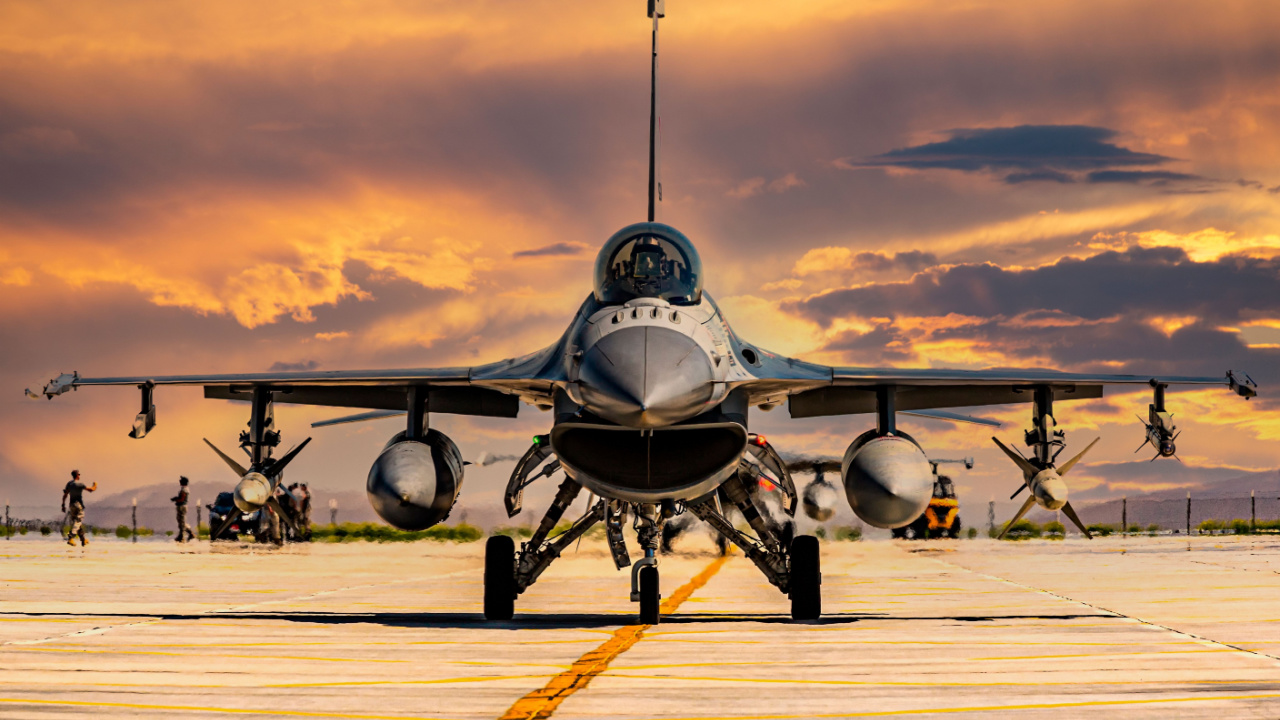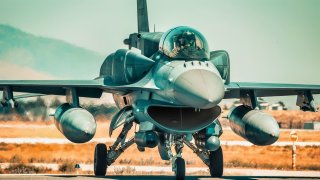Operation Opera: The First Time the F-16 Fighting Falcon Went to War
While the F-16 is an American-made plane, U.S. forces were not the first to give the venerable warbird her first test in combat, nor was it the Dutch or the Iraqis.
The F-16 Fighting Falcon, AKA “Viper,” was originally manufactured by General Dynamics. (Lockheed Martin now builds it.)
The aircraft has been around for 50 or so years, and it is one of the most combat-proven multirole fighter aircraft to have ever existed.
It dominated the skies in Operation Desert Storm, in 1991, and during Operation Allied Force in 1999, during which the Viper pilots of the U.S. Air Force and Royal Netherlands Air Force shot down Serbian MiG-29 “Fulcrums.” It did the same against ISIS, this time under the guidance of Iraqi Air Force pilots.
But while the F-16 is very much an American-made plane, U.S. forces were not the first to give the venerable warbird her first test in combat, nor was it the Dutch or the Iraqis.
Just as happened with the F-35 Lightning II, Israel was the first nation to use the Fighting Falcon in combat. Recall Operation Opera, also referred to as Operation Babylon, the 1981 Israeli Air Force (IAF) air strike against Saddam Hussein’s nuclear reactor.
Prelude to the Mission
While Operation Opera was indeed the first usage of the F-16 in a significant air-to-ground operation, the IAF had already successfully used the plane in an air-to-air mission three months prior. On April 28, 1981, an IAF F-16 pilot attached to the First Jet Squadron downed a Syrian Mi-8 over Riak, near the Lebanese town of Zahle.
Still, it was the Osirak raid that truly established the F-16 as an effective fighting tool, and from the Israelis’ perspective, the timing could not have been better. As noted in the April 2012 issue of Air Force Magazine:
“In the fall of 1980, Israeli military intelligence reported that the Osirak nuclear reactor, 12 miles southeast of Baghdad, would become operational between July and November of 1981. Iraqi dictator Saddam Hussein had no need for a reactor for electric power production or other peaceful purposes; Iraqi oil reserves were ranked sixth in the world. What Saddam really wanted from the reactor was the spent atomic fuel, from which plutonium could be extracted to manufacture the core of an implosion-style atomic bomb. The target for his bomb would be Israel. If Israel was going to act, it had to be soon. Once the reactor was in operation and “hot” — fueled with uranium — a bombing attack would spread radioactive fallout across Baghdad.”
Hence the strong sense of urgency that the Menachem Begin-led Israeli government was dealing with, a point that is totally lost on the anti-Israel crowd.
The Strike Mission: Here Comes the F-16
On June 7, 1981, the die was cast. At 3:55 p.m. that day, eight IAF F-16As — each carrying two unguided Mk-84 (BLU-117) 2,000-pound delay-action bombs — escorted by six F-15A Eagles providing top cover/fighter escort, embarked on their fateful mission. They took off from the now-defunct Etzion Airbase on the Sinai Peninsula. The mission commander was Lt. Col. Zeev Raz, with Lt. Col. Lt. Col. Amir Nachumi serving as second-in-command.
Along the way, they overflew the private jet of Jordan’s then-reigning monarch, King Hussein. His Majesty, being an experienced pilot himself, recognized the strike package for what it was, and relayed a warning message to Iraq, but it was never received by anyone in authority.
Time over Target was reached at 5:35 p.m. For those of you familiar with the movie Thirty Seconds Over Tokyo about the Doolittle Raid of WWII, an analogous movie title about Operation Opera could easily be Eighty Seconds Over Osirak. In that span of time, 14 of the 16 bombs struck home inside the dome and obliterated the reactor. As luck would have it, the two bombs that missed were both dropped by Col. Iftach Spector, who already had folk hero status in the IAF for having shot down 15 MiGs in the 1973 Yom Kippur War.
Ten Iraqi soldiers and one French engineer were killed in the strike. The Iraqi air defense gunners weren’t literally caught with their pants down, but close enough: They were in the cafeteria for chow, the radars switched off. They did manage to get off a few parting shots at the Israeli warbirds, but they were firing blindly, with nary a single hit scored against their attackers. They merely inflicted collateral damage on their own compatriots.

Saddam, living up to his title of the Butcher of Baghdad, was quite unforgiving in his reaction to the air strike. He ordered the execution of the air defense zone commander and all officers in his command over the rank of major. Twenty-three other officers and pilots were imprisoned.
The Aftermath
The entire IAF strike force returned to Etzion, completely unscathed, at 7 p.m. Indeed, the only damage that Israel would incur from Operation Babylon would be in the public relations realm, as they faced worldwide condemnation by everybody from the International Atomic Energy Agency to UN Secretary-General (and ex-Nazi) Kurt Waldheim, British Prime Minister Margaret Thatcher, and Jeane Kirkpatrick, U.S. delegate to the UN.
Sometime later, though, U.S. Secretary of Defense Dick Cheney acknowledged that the Osirak operation had “made our job much easier in Desert Storm.” Good job, F-16.
About the Author
Christian D. Orr is a former Air Force Security Forces officer, Federal law enforcement officer, and private military contractor (with assignments worked in Iraq, the United Arab Emirates, Kosovo, Japan, Germany, and the Pentagon). Chris holds a B.A. in International Relations from the University of Southern California (USC) and an M.A. in Intelligence Studies (concentration in Terrorism Studies) from American Military University (AMU). He has also been published in The Daily Torch and The Journal of Intelligence and Cyber Security. Last but not least, he is a Companion of the Order of the Naval Order of the United States (NOUS).
All images are from Shutterstock.


